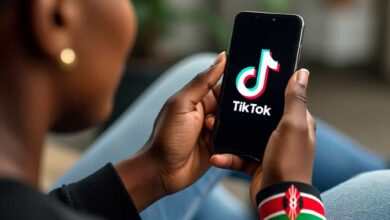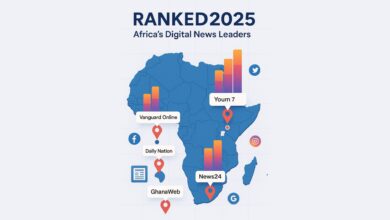
As the SARS-CoV-2 virus (Covid-19) continues to spread globally, and vaccination regimes are yet to fully be approved for global emergency use, the most vital arsenal to curtail the burden of the epidemic includes not only pharmaceutical weapons, but, crucial non-pharmaceutical measures.
While public gatherings have been cancelled, lockdowns, mask-wearing and social distancing sanctioned, and movement across countries significantly limited, all these measures remain dependent on public wide compliance. Thus, concerted efforts towards public awareness on current risks and clear commentaries by media coverage on the rules and guidelines on the Covid-19 epidemic continue to play a vital role to influence the public perception of risk, and behavioural changes, and the eventual evolution of disease.
Media Coverage
Since the initial confirmation of the Covid-19 pandemic, the breadth of global media coverage has gradually evolved to become complex and heterogenous. According to a recent study between January and October 2020, Covid-19 coverage globally accounted for up to 25% of all front-page online news reports. However, the extensive number of entities and outlets covering the pandemic have proven to be a source of concern over public confusion and misinformation on the spread of the SARS-CoV-2.
Analyses in a variety of reports on English-language data sources on overall Covid-19 coverage showed heterogenous coverage across countries and media outlets. This heterogeneity has been largely attributed to the prolific spread of Coronavirus related information across diverse traditional news sites, social media, blogs, and many other platforms. Within each of these platforms’ user interaction has similarly had a great impact on topical trends shared across platforms.
The diversification of reporting on the Covid-19 has consequently led to growing concerns on the spread of fake news placing public health safety at risk. Wherefore, it is becoming clear that both the traditional media and social media platforms have crucial roles in framing information and influencing public opinions and perception and the observed behavioral responses.

Level of Coverage
TIME (news website) documented that within the initial weeks of January 2020, when the first outbreak was officially reported, there were up to 41,000 articles written in the English language on ‘coronavirus’ globally with 19,000 making to the headlines. A recent study in 2020 highlighted that in the United States, Google searches for coronavirus skyrocketed immediately after the first announcement made on the first confirmed cases in each state.
On 17 March 2020, Vox released that, approximately 1% (30) of high-traffic news sites in the US published articles on the SARS-CoV-2 pandemic, and they garnered up to 13% of all page views. Further statistics, indicated that the article views in mid-March were 30 percent lower compared to mid-March 2019. Besides, the dominant sub-topics in these articles included: self-quarantine, social distancing, lockdown, and flattening the curve.
A study recently published in December 2020 indicated that public attention and response throughout the period of the pandemic has mostly been driven by media coverage than by disease spread. These findings correlate with data from an assessment of up to 141,000 news headlines between January to June 2020 on ‘Coronavirus’ written in the English language that showed 52% of the headlines aroused negative public perceptions in comparison with only 30% that were associated with positive sentiments. The study underlines how news headlines significantly contribute to public uncertainty and fear, a factor that debilitates health and economic outcomes.
Misinformation
Social media platforms like Facebook, Twitter, Instagram, Reddit, WhatsApp, YouTube, and Wikipedia have similarly recorded increased online discussions and the spread of decentralized information. However, these have been a bane considering they have influenced a faster spread of misinformation. Twitter data shows the continuous spread of low-quality misinformation concerning Covid-19 statistics from local outbreaks.
In Iran, fake reports indicated that methanol ingestion could cure the SARS-CoV-2 virus, misinformation that resulted in over 300 deaths. Another example of fake news was that the virus is spread via 5G. Similarly, social media was awash with claims that calcium chloride, garlic, or Vitamin C could treat the disease even though these were not verified by health professionals. As a result, in this current full-fledged digital society, the spread of wrong information is a growing concern as it potentially encourages unscientific, irrational, and dangerous behavioural responses from the public.
To combat the spread of wrong information, the World Health Organization (WHO) partners with large television and newspaper media houses as well as other key stakeholders including the health care sector, the private sector, faith-based organisations, and travel and tourism industry to control misinformation and provide links to credible health sources such as local health authorities websites, WHO website and Google Scholar where credible medical journals are published. Also, fact-checking websites continue to employ data from WHO and CDC to debunk misinformation
Harnessing modern Media
On the flip side, these modern media have been crucial sources of data during the Covid-19 pandemic utilized to monitor and observe public health. Searches on Google, posts on Facebook, Twitter, and Reddit, and page views in Wikipedia have informed casts, studies, and predictions on the prevalence and spread of Covid-19. Consequently, these media outlets can potentially be harnessed to inform decisions on pubic behavioral responses and the phenomena driving them. Moreover, according to a Niemans report, the spread of fake news can similarly be addressed by encouraging collaboration between mainstream and social media to deliver consistent information through shared links with headlines and content that use appropriate words, and images.







